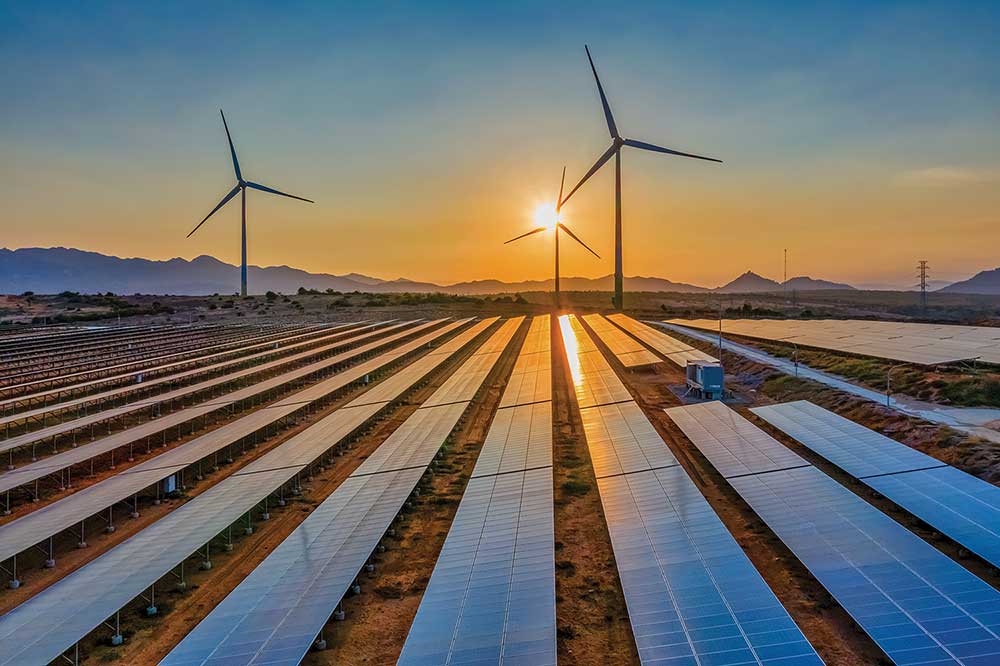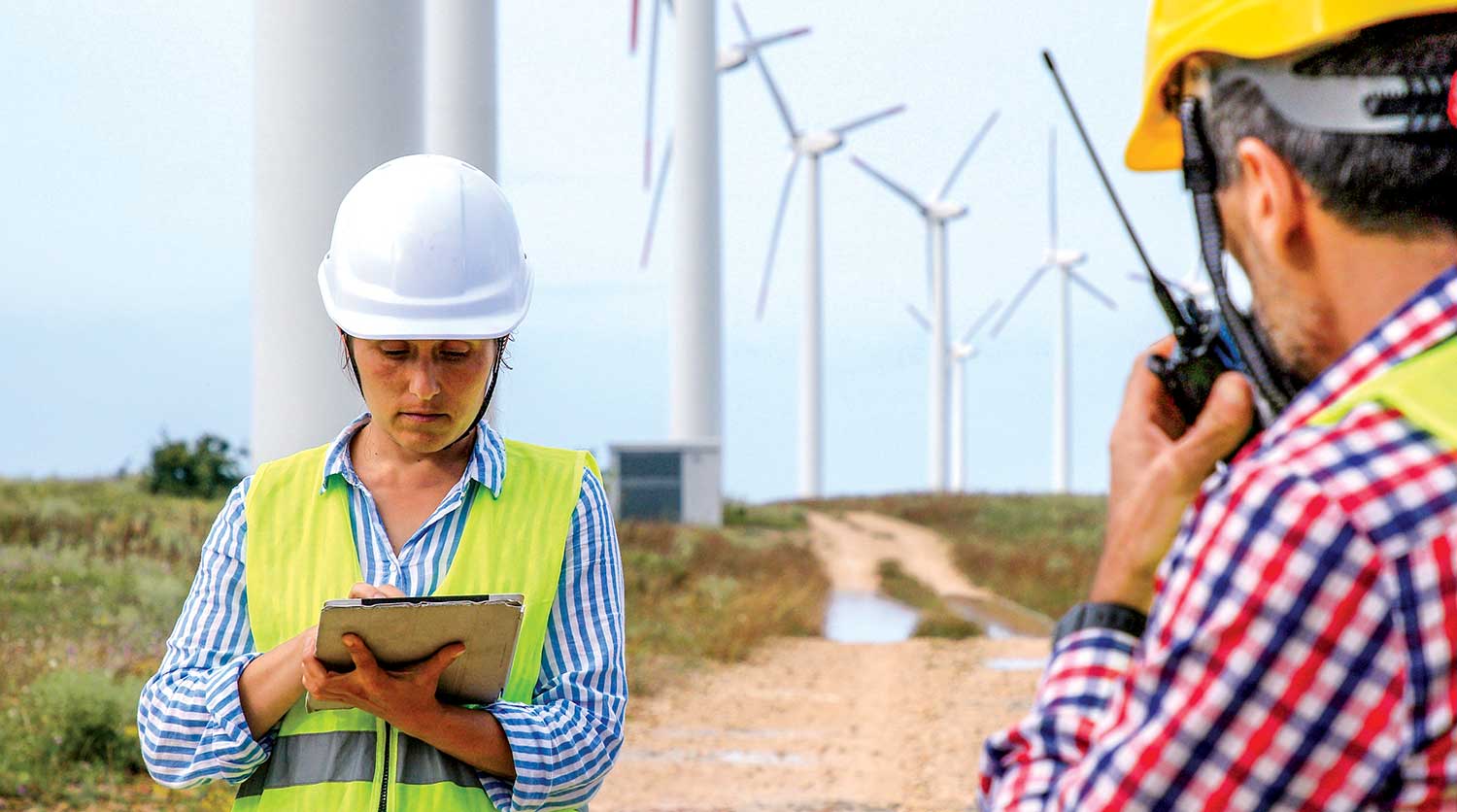“You’ve come a long way, baby!” Cigarette commercials are among the many things from my childhood that I have watched disappear over time. While I don’t live in Virginia, and I am far from considering myself “slim” anymore, the slogan from this cigarette commercial resonates. We have come a very long way with technology advancements in a rather short amount of time. It seems like just yesterday that I was a boy watching my father get out his cellular bag phone and plug it into his cigarette lighter in his work truck to gain DC power to make a phone call on the jobsite. While cigarette lighters no longer exist in modern vehicles, cell phones have become something that are a part of our everyday lives and have even become critical in performing our jobs through things like two-party authentication sign-in. As technology has advanced, the way in which we are provided power to utilize that technology has also advanced.

While we continually move to replace coal- and oil-fired power plants with cleaner solutions, wind and solar power are two popular renewable energy sources being utilized. According to a CNBC article, 2022 is expected to be a record year for wind and solar growth. A report referenced in the article from S&P Global Market Intelligence states that they expect as much as 44 gigawatts (GW) of utility-scale solar and 27 GW of wind to come online in 2022. That’s nearly double the estimated 23 GW of solar in 2021 and also nearly a 70 percent increase for wind from the annual record of 16 GW set in 2020. So, what does that all mean for the inspectors, installers, and designers that find themselves entrenched in the National Electrical Code® (NEC®) world on a daily basis?
In many cases, the answer is: not much. Because many wind and solar installations that generate large amounts of power are owned or leased by the electric utility, they are excluded from being covered by the NEC based on Section 90.2(B)(5). However, there are still smaller scale installations, in comparison, for both wind and solar that are privately owned within both residential homes and commercial facilities that would fall within the scope of the NEC, even if they are supplying power back to the utility grid. Installations that fall within these parameters must be designed, installed, and inspected to meet the requirements found within the pages of the NEC. While wind energy is often used for utility-owned power generation, it is rather uncommon when it comes to smaller scale installations, at least in comparison to solar energy. Many electricians and inspectors have worked within solar installations in homes and businesses but, with a few exceptions, it is far less likely that they have come in contact with wind electric systems at that scale. Understanding the origination, progression, and potential future path for wind electric systems within the NEC is a great starting point for further knowledge of how to properly design, install, and inspect this renewable energy source.
2011 NEC
Wind power was first implemented into the 2011 edition of the NEC under Article 694, Small Wind Electric Systems. The original scope listed in Section 694.1 covered “small wind (turbine) electric systems that consist of one or more wind electric generators with individual generators having a rated power up to and including 100 kW. These systems can include generators, alternators, inverters, and controllers.” The Informational Note to 694.1 permitted the wind electric system(s) to be stand-alone or interactive with other electrical power production sources. Section 694.3 further explained that where requirements in other articles of the NEC differ with those in Article 694, the requirements in Article 694 should be applied. However, when used in parallel with other sources of electricity, the requirements in Article 705, Interconnected Electric Power Production Sources, must be applied. In reviewing Report on Proposal (ROP) A2010 from when Article 694 was added, the provided substantiation mentioned there were not currently NEC rules for installations that were not under the utility. The payback was higher for wind versus solar because it could run for more hours per day, and that demand was increasing with installations taking place in Washington state as well as future installations announced in San Francisco by their mayor.
2014 NEC
After one NEC cycle as “Small Wind Electric Systems,” Article 694 was renamed “Wind Electric Systems” for the 2014 edition of the NEC, and the rated power limitation of 100 kW and below was removed. In part, the substantiation provided for the change stated that “…there is no significant difference between an electrical installation for a turbine sized less than 100 kW than for one rated above 100 kW. As far as we can see, the requirements developed for ‘Small Wind’ should and can also apply for Intermediate and Large wind, as long as it still falls within the scope of the NEC.” UL standards that were developed around wind turbines over this time period also supported that there was not a need to differentiate between the specific sizes of wind electric systems.
2017 NEC
As previously mentioned under the 2011 NEC, Section 694.3 gave direction as to how to utilize the rest of the NEC in unison with Article 694, as well as referencing Article 705 when a wind electric system was used in parallel with other sources. Within the 2017 NEC, Section 694.3 was removed with reason given that Section 90.3 covering code arrangement already explained how to use the NEC. A global first revision (FR-7516) removed the term “small” from several sections referencing “small wind electric systems” in Article 694 that were missed when the article name changed from “Small Wind Electric Systems” to “Wind Electric Systems” in the 2014 cycle. Section 694.18 was removed from Article 694 and moved to newly created Article 710, Stand-Alone Systems. The 2017 NEC cycle also saw the introduction of new Article 712, Direct Current Microgrids, which often incorporate wind and solar energy sources. Many changes were made in the 2017 NEC cycle around NEC Style Manual requirements. Efforts were made by the NEC Code Making Panels to better align the grounding and bonding requirements of Section 694.40 with Article 250, Grounding and Bonding.
2020 NEC
The 2020 NEC cycle saw a sentence added in Section 694.2 stating that the definitions within Article 694 only apply to this specific article. Section 694.7(B) was modified in order to cover the process of field evaluation rather than just being “field labeled”, which is not an actual process itself. A similar change around field evaluation was made to Section 694.7(F). Receptacle requirements for wind electric systems covered within Section 694.8(E) were made to clearly show that GFCI requirements, as listed in Section 210.8, must also be applied beyond the conditions of this section. Section 694.54 covering identification of power sources was broken down into three segmented groups: interconnected AC systems, DC microgrid systems, and stand-alone systems, to add clarity on installation requirements for plaques and directories for the specific systems.
Potential 2023 NEC
As this article is being written, the second draft of the 2023 NEC is being vetted and will likely be posted about the same time as publication of this article. Once the second draft is posted, we will have a clearer picture of what the 2023 NEC may look like, and it remains subject to change until formally issued by the Standards Council. From the First Draft Report that was posted in June 2021, we know that within Article 694 there were:
(17) Public Inputs, or PIs
(9) First Revisions, or FRs
(1) Global First Revision
(2) Detail First Revisions
The First Draft reflects a proposal to move definitions in Section 694.2 to Article 100, Definitions, to align with revisions to the NEC Style Manual. Section 694.7 received a first revision that, if accepted, will help to clarify that, whether construction or maintenance of a wind electric system was being performed, it must only be done by qualified persons. A first revision was submitted in Section 694.7(B) that modified the Informational Note to include UL 6141, Standard for Wind Turbines Permitting Entry of Personnel and UL6142 Standard for Small Wind Turbine Systems. Because of First Draft changes made to other articles, Section 695.54 covering identification of power sources, which was modified in the 2020 NEC, is now ready to have the specific systems removed and require plaques and directories to be installed in accordance with 705.10. Again, this reflects a review of First Draft proposals for the 2023 edition, they are not final, and will be subject to change at the Second Draft and throughout the remainder of the standards development process.
We’ve come a long way with no sign of slowing down. Technology can change in the blink of an eye, and it is critical that the NEC keeps up to ensure the safest installations possible. It is also critical that local jurisdictions continue to expedite the process to ensure they are using the latest NEC with the most up-to-date changes for those technologies. When it comes to wind electric systems, we have taken a look at where the NEC has grown since their first inclusion in the 2011 NEC. We have also taken a look at where we may be going with the 2023 NEC as it continues to be developed. Whichever way the winds of change blow the NEC next, it is critical that we remain knowledgeable and stay the course.












Find Us on Socials